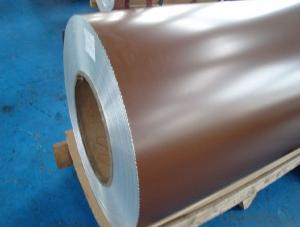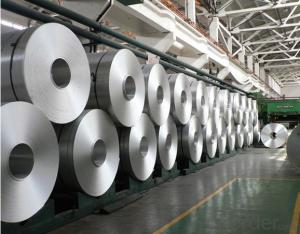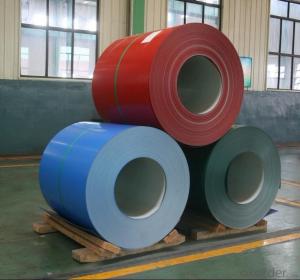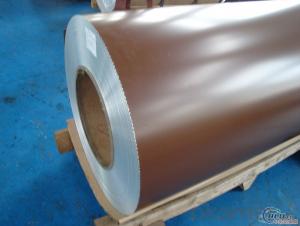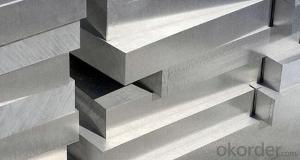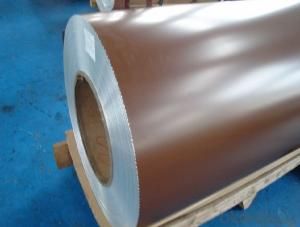3003 aluminum coil for ACP, Color Coated
- Loading Port:
- Shanghai
- Payment Terms:
- TT OR LC
- Min Order Qty:
- 2.5
- Supply Capability:
- 5000 m.t./month
OKorder Service Pledge
OKorder Financial Service
You Might Also Like
Specification
3003 aluminum coil for ACP, Color Coated
l Product Information
| Item | 3003 aluminum coil for ACP, Aluminum Composite Panel, color coated |
| Alloy Grade | 1100, 3003, 5005 |
| Thickness | 0.3mm~ 3mm |
| Width | 30mm~1850mm |
| Exported Area | USA,UAE, Europe, Asia, Middle East, Africa, South America |
| Min trial order | 2.5 ton each size |
| Tolerance | +2/0mm,thickness tolerance :+0.02/-0.02mm (or according to customers' request) |
l Packaging & Delivery
Packaging detail: Sea Worthy Wooden pallet
Delivery detail: About 25 days

l Company Profile
CNBM International Corporation, China National Building Materials (Group) Corporation, is one of the largest companies in China building material & equipment industry, with 42,800 employees and sales in 2005 of US Dollar 4.395 billion. In 2006, China National Building Material Company Limited was listed on Hong Kong Stock Market with the stock code as 3323.
Aluminium Products have been our featured products. We have specialized in aluminium products for about a decade and have sold our good quality aluminium products to the worldwide.

l CNBM World Wide
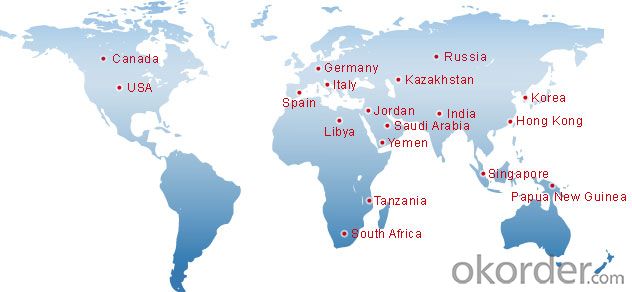
l Product Images
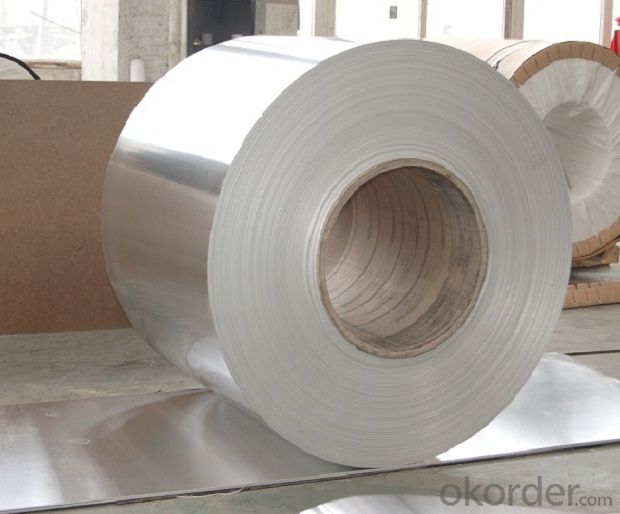

l Certificates
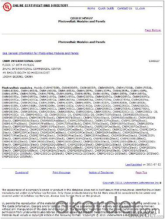
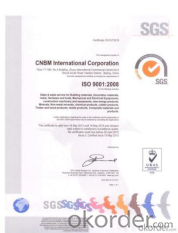
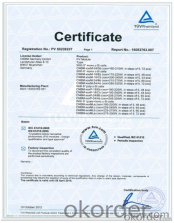
l FAQ
Q: Do you provide free samples?
A: Yes, free samples will be sent to you on freight at destination.
Q: Can I get your latest products catalogue?
A: Yes, it will be sent to you in no time.
Q: What is the MOQ?
A: 2.5 tons
Q: What are your payment terms?
A: We accept L/C, T/T.
- Q: Why is the aluminum roll upset?
- Mainly in the aluminum slitting process, for various reasons, does not meet the standards and specifications of products, can be used to roll the machine from the new trimming and slitting, winding up to meet customer needs of product specifications
- Q: What are the different sizes available for aluminum coils?
- The sizes available for aluminum coils can vary depending on the manufacturer and specific requirements. However, common sizes range from narrow coils with widths as small as 0.2 inches to wider coils with widths up to 72 inches. The thickness of these coils can also vary, typically ranging from 0.006 to 0.25 inches.
- Q: How are aluminum coils used in the production of air ducts?
- Due to its unique properties and benefits, aluminum coils find extensive use in the manufacturing of air ducts. Firstly, aluminum's lightweight nature makes it convenient to handle and install during the duct manufacturing process, thereby reducing the overall weight of the air duct system and facilitating easier transportation and installation. Secondly, aluminum coils possess high resistance to corrosion, which is particularly crucial for air ducts that are constantly exposed to moisture and various environmental factors. This resistance ensures that the air ducts maintain their structural integrity and longevity, reducing the need for frequent maintenance and replacement, thereby minimizing costs. Furthermore, aluminum coils exhibit excellent thermal conductivity, enabling air ducts to efficiently transfer air at the desired temperature. This promotes enhanced energy efficiency and reduced energy consumption. The even distribution of temperature throughout the air ducts also contributes to maintaining a comfortable indoor environment and reducing the workload on HVAC systems. Additionally, the malleability of aluminum coils allows them to be easily shaped and customized to fit specific requirements. This flexibility in design facilitates better utilization of available space and seamless integration into different building structures. Lastly, aluminum is a sustainable material that can be recycled multiple times without losing its properties. This makes it an environmentally friendly choice for air duct production, reducing the environmental impact associated with manufacturing processes. In summary, aluminum coils are essential in the production of air ducts due to their lightweight, corrosion-resistant, thermally conductive, customizable, and sustainable characteristics. These properties contribute to the efficient functioning of HVAC systems, energy savings, and environmental sustainability in the construction industry.
- Q: Can aluminum coils be used in the production of cryogenic storage tanks?
- Yes, aluminum coils can be used in the production of cryogenic storage tanks.
- Q: Are there any limitations to using aluminum coils?
- Yes, there are certain limitations to using aluminum coils. One limitation is that aluminum has a lower tensile strength compared to other metals like steel, making it more prone to damage or deformation under heavy loads or impacts. Additionally, aluminum coils can be susceptible to corrosion if not properly protected or coated. Finally, aluminum coils may not be suitable for applications that require high electrical conductivity, as aluminum has a lower conductivity compared to copper.
- Q: Can aluminum coils be anodized?
- Yes, aluminum coils can be anodized. Anodizing is an electrochemical process that enhances the natural oxide layer on the surface of aluminum, making it thicker, more durable, and resistant to corrosion. This process is commonly used for aluminum sheets, plates, and coils. Anodizing can be performed on both flat and formed aluminum coils, providing them with a range of attractive colors and finishes. The anodized coating also improves the aluminum's ability to accept paint and adhesives, making it a popular choice for various applications such as architectural cladding, automotive trim, and electronic components.
- Q: How are aluminum coils used in solar panels?
- Aluminum coils are used in solar panels as part of the construction and structure of the panel. They are used to hold the solar cells in place and provide a sturdy framework for the overall structure. Additionally, aluminum coils help with heat dissipation and ensure efficient functioning of the solar panel by preventing warping or damage caused by temperature fluctuations.
- Q: Why does the hollow aluminium rolling shutter door fall off for a long time?
- The series of HO profiles is heated by Doyle's Aluminum Alloy bar by extrusion forming production, use the 6063 Aluminum Alloy material, has excellent plasticity, corrosion resistance, toughness, easy polishing, film. Aluminum Alloy thermal cooling fast, excellent seismic performance, the design of hollow base not only greatly reduce the heat conduction, but also effectively reduces the acoustic resonance effect, suitable for hot summer and warm winter area and some noise pollution area.
- Q: What are the different thicknesses available for aluminum coils?
- Aluminum coils are available in various thicknesses to cater to different application requirements. The thickness options typically range from 0.2mm to 6mm. The specific thickness needed depends on the intended use of the aluminum coil. Thinner coils, such as those with a thickness of 0.2mm to 1mm, are often used in electronics, packaging, and building materials where flexibility and lightweight properties are important. Medium thickness coils, ranging from 1mm to 3mm, are commonly employed in automotive parts, roofing, and cladding applications. On the other hand, thicker aluminum coils, with a thickness of 3mm to 6mm, are utilized in heavy-duty industrial applications like shipbuilding, aerospace, and construction. It is important to consider the specific requirements and intended use of the aluminum coil to determine the most suitable thickness for the desired application.
- Q: Can the little can opening cap things on an aluminum can be recycled? My friend told me if you fill a two liter bottle with them you can get loads of cash. Is this true?
- Of okorder .
Send your message to us
3003 aluminum coil for ACP, Color Coated
- Loading Port:
- Shanghai
- Payment Terms:
- TT OR LC
- Min Order Qty:
- 2.5
- Supply Capability:
- 5000 m.t./month
OKorder Service Pledge
OKorder Financial Service
Similar products
Hot products
Hot Searches
Related keywords
